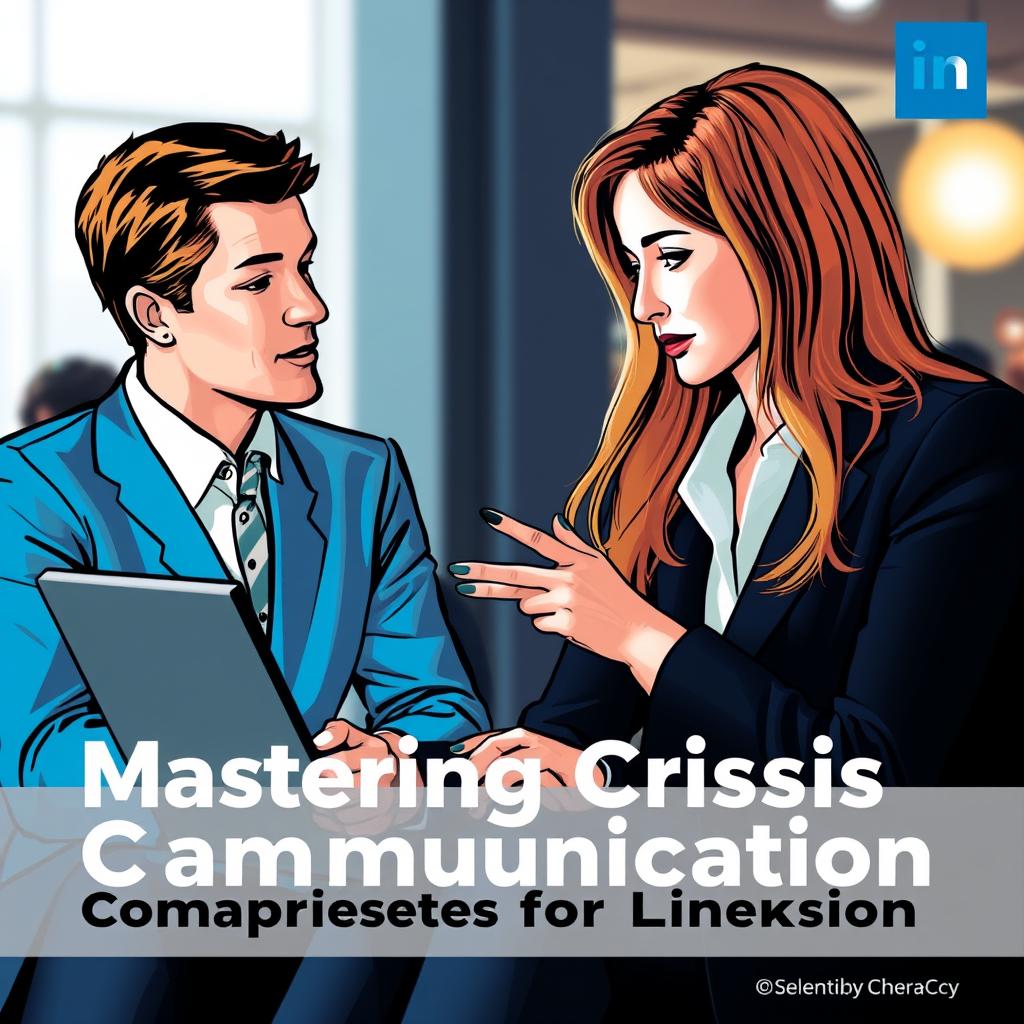Mastering Crisis Communication on LinkedIn: Best Practices for Brands
Estimated reading time: 5 minutes
- Effective communication can protect brand reputation.
- Authenticity and empathy are essential during crises.
- Transparency fosters trust among stakeholders.
- Engaging with the community strengthens connections.
Table of Contents
- Understanding the Crucial Role of Effective Communication
- Proven Strategies for Effective Crisis Communication
- Take Action: Elevate Your Crisis Communication
- FAQ Section
Understanding the Crucial Role of Effective Communication
During a crisis, how your brand communicates can serve as either a shield or a sword. As crises unfold, the spotlight on your brand grows unforgivingly bright, revealing underlying values, priorities, and authenticity. The imperative is clear: brands must transition away from corporate jargon and present a human face, recognizing the concerns of employees, customers, and communities, and responding with sincerity and action.
Authenticity is a strategic imperative in today’s climate. A single misstep—a vague or tone-deaf post—can trigger public backlash, potentially causing long-term reputational damage. A notable challenge for brands is finding the right balance between professionalism and empathy, particularly when each communication needs to resonate on a human level. This challenge can be effectively resolved through deliberate and informed communication strategies that prioritize transparency, integrity, and connection.
Empathy isn’t just a corporate social nicety; it’s an expectation from a discerning audience on LinkedIn. When brands face crises—like a data breach or a supply chain disruption—crafting an authentic narrative around their response can go a long way. For instance, rather than issuing a generic statement about “prioritizing safety,” consider utilizing candid messages from leadership that include remedial actions and support resources. By adopting this approach, brands not only present a strong human element in their communication but also build a more resilient reputation that withstands reputational storms.
Proven Strategies for Effective Crisis Communication
1. Emphasize Authentic and Empathetic Communication
Key Practices:
- Acknowledge the crisis openly.
- Express genuine concern for all affected stakeholders.
- Follow words with dedicated actions to alleviate the situation.
Example Approach: When a company faces a crisis, say a data breach, instead of saying, “We prioritize security,” a more impactful response involves a heartfelt apology from the CEO, coupled with measures taken to support affected customers, such as free credit monitoring.
2. Highlight Value-Driven Content Marketing
Key Practices:
- Showcase how your core values guide decision-making during challenges.
- Share stories of employee or community assistance and initiatives.
Example Approach: For a retail brand affected by supply chain issues, communicate how they are sourcing materials locally to reduce environmental impact while supporting local economies.
3. Establish Thought Leadership
Key Practices:
- Leverage LinkedIn to publish insightful and relevant content on industry trends and crisis management.
- Host webinars or share tips providing valuable information.
Example Approach: A cybersecurity firm can demonstrate their expertise during a wave of attacks by releasing articles detailing effective countermeasures or hosting discussions to guide businesses through the crisis.
4. Increase Executive Visibility
Key Practices:
- Encourage executives to share personal insights and timely updates on the organization’s responses.
- Enhance openness through video messages or live Q&A sessions.
Example Approach: A CEO navigating a PR crisis could post weekly video updates directly addressing stakeholder concerns, humanizing the brand in the process.
5. Foster Employee Advocacy
Key Practices:
- Empower employees to share their responses and experiences related to the crisis.
- Highlight employee contributions and testimonials through LinkedIn.
Example Approach: Showcase stories from employees actively involved in crisis management, illustrating the company’s commitment to its workforce and creating a collective voice.
6. Commit to Transparent Communication
Key Practices:
- Regularly update stakeholders on the evolving situation and steps being taken.
- Proactively address misinformation and have clear channels for inquiries.
Example Approach: Offer consistent updates on your LinkedIn page to ensure that all stakeholders are correctly informed, maintaining trust and transparency amidst uncertainty.
7. Engage with Your Community
Key Practices:
- Encourage dialogue with stakeholders through Q&A sessions, polls, or discussion groups.
- Monitor conversations actively for concerns and sentiments.
Example Approach: Host a live discussion on LinkedIn so stakeholders can engage, ask questions, and express their concerns, fostering a stronger connection with your brand.
Take Action: Elevate Your Crisis Communication
The time to act is now! Crisis communication is not merely about damage control; it’s an opportunity to showcase your brand’s resilience, integrity, and commitment to its stakeholders. At Professionalize It, we equip organizations with the tools and insights required to navigate these stormy waters successfully.
Whether you want to refine your communication strategies or need specialized assistance to craft impactful messages during crises, we offer tailored solutions designed to enhance your brand narrative on LinkedIn and beyond.
Ready to Master Professional Communication?
- Subscribe to our newsletter for the latest tips and insights.
- Book a consultation for personalized AI-driven content strategies.
- Explore our premium resources to refine your skills further.
Your brand deserves to shine, even in the toughest times. Visit us at professionalizeitto.me and take the first step towards transforming your communication for a resilient future.
FAQ Section
What is crisis communication?
Crisis communication is the strategized approach taken by organizations to communicate with stakeholders during significant events that could damage their reputation.
How important is transparency in crisis communication?
Transparency is crucial during a crisis, as it helps build trust and credibility among stakeholders, reducing uncertainty and confusion.
Why is empathy essential in crisis communication?
Empathy helps connect with stakeholders on a personal level, demonstrating that the organization values their concerns and is responsive to their needs.


